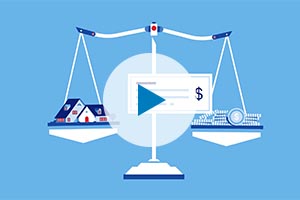
How we did it: Converted to solar power

Tips for realtors to help clients get their homeownership goals back on track

Refinancing may be a great way to bring down your mortgage payment or to pay it off completely, or you might want to take out a new loan for a big purchase. With interest rates remaining low refinancing is appealing to many right now. However, there are several factors to consider before you begin the process.
The Federal Reserve dropped interest rates in response to COVID-19 and those rates have continued to remain low. But before you decide to refinance your home loan it’s a great idea to start by meeting with a mortgage banker.
Your mortgage loan officer can quickly become your number one ally in the refinance process. And if you’re worried about meeting in-person know that many lenders provide the experience virtually. “You can work with your loan officer online, via the bank’s loan portal, email, phone, and even video call, so you get an in-person feeling but keep it virtual,” says Aaron Tyler, (NMLS #130688) Mortgage Loan Officer at U.S. Bank.
Why should you refinance?
Before you refinance, consider your goals for refinancing. Do you want to reduce the amount of interest you pay over the loan term? Are you consolidating debts at a lower interest rate? Do you want to reduce your monthly payment? Knowing your goals will help determine the best type of refinance for your situation and decide whether any closing costs are worth it.
When to do it
These are some situations where a refinance might make sense for you:
When to hold off
If any of the following situations apply, refinancing may not be the best choice at this time:
Choosing the right refinancing option
When reviewing refinancing options, consider whether you want a shorter term to pay off the loan more quickly or a longer term to lower your payment. Also, consider the closing costs, interest rates and your ultimate goals for refinancing.
There’s also more than one type of refinance. You may want to do a cash-out refinance if you owe less than what the home is worth, or you may want to consolidate debt or borrow against your home equity.
Learn more about refinancing, including a few common reasons people refinance.
Related content


